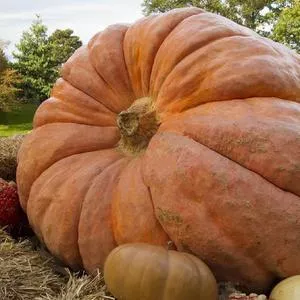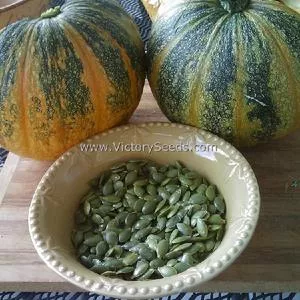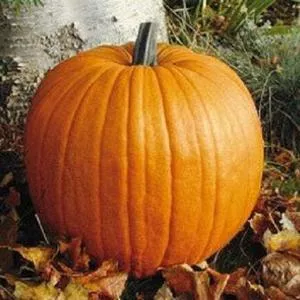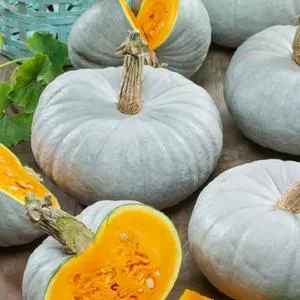Small Sugar Pumpkin
Price: $3.66
SKU: 3320061Once one of the most common pie-type pumpkins to see in New England farmer's fields, they were prized for their fine, sweet flesh and traditionally used for making Thanksgiving pumpkin pies. Over the past couple of centuries, some of its many synonyms have included, 'Boston Golden Sugar', 'Boston Pie', 'Early Small Sugar', 'Early Sugar', Golden Sugar', 'Prolific Sugar', Rhode Island Sugar', and 'Yum Yum'.[1]
Described by Fearing Burr in 1863 as,
Keep watered during the dry weather and cultivate or mulch to reduce weeds. Harvest fruit when skin has turned completely orange and it cannot be easily dented with your fingernail. Cut from vine leaving a two inch stem.
- "Vegetables of New York: Vol.1 - Part IV - The Cucurbits," by William T. Tapley, Walter D. Enzie, Glen P. Van Eseltine, 1937.
- "Field and Garden Vegetables of America," Fearing Burr, 1863.
Customer Reviews:
By Marshall Gibson on February 25, 2018
Don't ever buy pumpkin pie again. These are so easy and fun to grow, and so delicious. Your pumpkin pies will taste like pumpkin instead of pumpkin spice. It is a beautiful thing.<br><br>I direct sowed these in early/mid May. I had good germination, but one of my three plants died after the vine got about four feet long. I don't know why. Maybe root rot or the other two choked it out, as they were doing great. Either way, the two that lived did well ... Almost too well. I planted them along the edges of my raised beds so that they could grow over the side and not take up my whole garden. That they did, almost to the point where I couldn't walk through there come end of summer.<br><br>I would estimate each plant put out four to five pumpkins, ranging from three to five pounds each. A few of these didn't want to turn orange in time so I was forced to cut them green when the rains came. These guys managed to ripen in the kitchen without problem. We cooked/pureed and froze a lot of these, and my wife made about ten pumpkin pies for Thanksgiving, Christmas and every other reason we could think of. And boy are these on a whole different level than store bought.<br><br>We still have one in the kitchen about six months later. It is still looking good although it may be near the end of its storage life. I highly recommend this wonderful seed. I will be growing it again this year!
By Paula Beach on January 13, 2016
I had trouble getting these to germinate. I only got one plant, but it was huge. The vines were about 20 feet long. I got three pumpkins, each with about two pounds of usable flesh (about two pies worth). The flesh is a shocking orange and not too stringy. I've found that store-bought pumpkin makes a very pale pie, but not these. The flavor is good too. Freezes well. Plant early if you have a short growing season like I do. These do take their time.
By Anne Holzinger on August 17, 2015
Planted seed direct in garden. Great germination. Good yield.
By rosemary kelley on January 3, 2014
This was another of the new plants I grew in 2013. I started the seeds outdoors in mid May. I planted these in mounds in my corn and winter squash garden. They grew just fine and I ended up with about 17 pumpkins ranging from 2-8 lbs. I processed and froze some of the pumpkins for cooking and used the rest for fall decorating. These are still in cold storage in January and doing just fine. These pumpkins have a good taste and perfect for cooking and they make such cute fall displays. I will be growing more of these this year.





